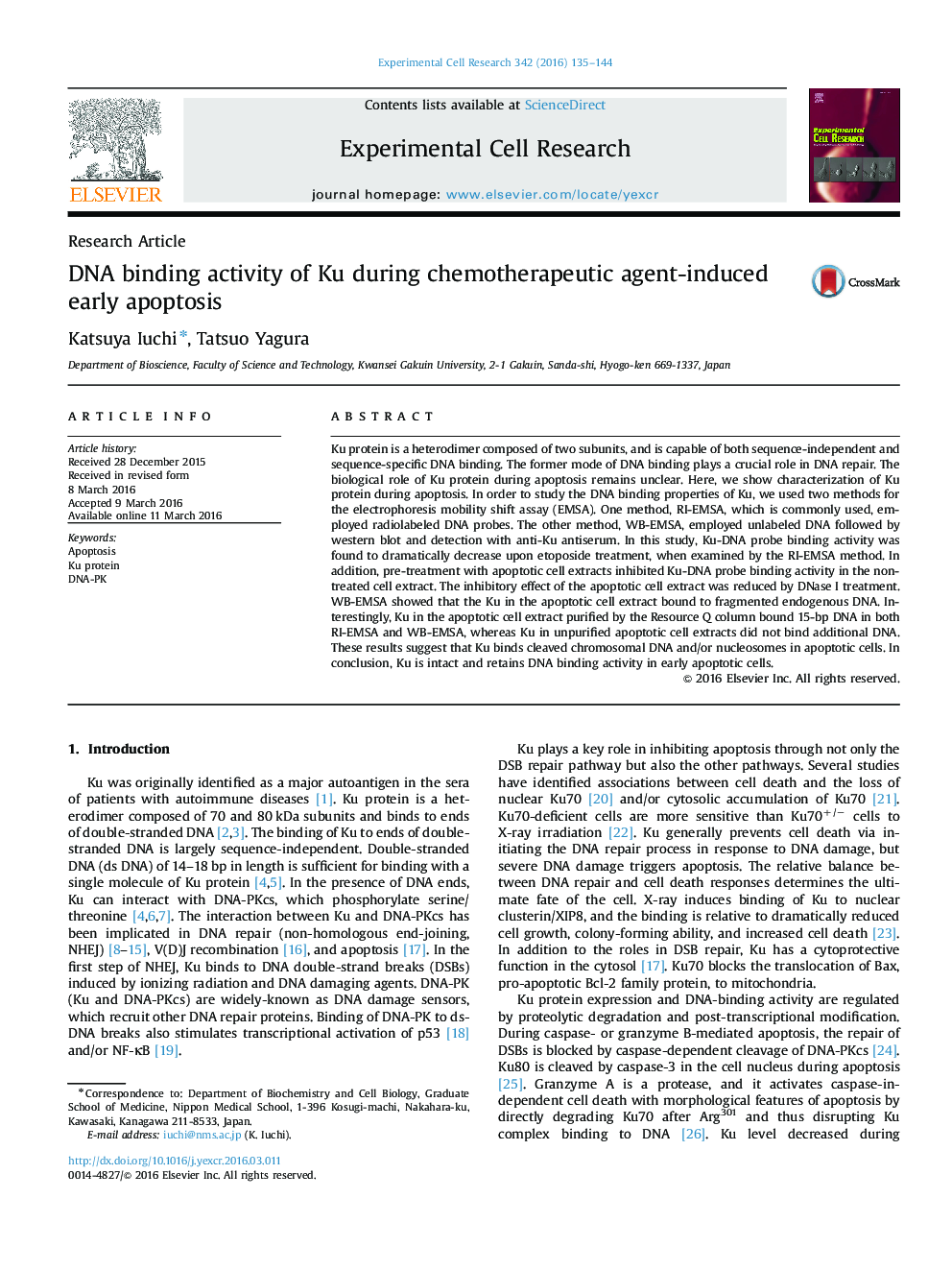| Article ID | Journal | Published Year | Pages | File Type |
|---|---|---|---|---|
| 10903723 | Experimental Cell Research | 2016 | 10 Pages |
Abstract
Ku protein is a heterodimer composed of two subunits, and is capable of both sequence-independent and sequence-specific DNA binding. The former mode of DNA binding plays a crucial role in DNA repair. The biological role of Ku protein during apoptosis remains unclear. Here, we show characterization of Ku protein during apoptosis. In order to study the DNA binding properties of Ku, we used two methods for the electrophoresis mobility shift assay (EMSA). One method, RI-EMSA, which is commonly used, employed radiolabeled DNA probes. The other method, WB-EMSA, employed unlabeled DNA followed by western blot and detection with anti-Ku antiserum. In this study, Ku-DNA probe binding activity was found to dramatically decrease upon etoposide treatment, when examined by the RI-EMSA method. In addition, pre-treatment with apoptotic cell extracts inhibited Ku-DNA probe binding activity in the non-treated cell extract. The inhibitory effect of the apoptotic cell extract was reduced by DNase I treatment. WB-EMSA showed that the Ku in the apoptotic cell extract bound to fragmented endogenous DNA. Interestingly, Ku in the apoptotic cell extract purified by the Resource Q column bound 15-bp DNA in both RI-EMSA and WB-EMSA, whereas Ku in unpurified apoptotic cell extracts did not bind additional DNA. These results suggest that Ku binds cleaved chromosomal DNA and/or nucleosomes in apoptotic cells. In conclusion, Ku is intact and retains DNA binding activity in early apoptotic cells.
Keywords
Related Topics
Life Sciences
Biochemistry, Genetics and Molecular Biology
Cancer Research
Authors
Katsuya Iuchi, Tatsuo Yagura,
